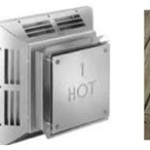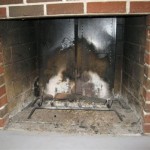Long Fireplace Mantels: An Extensive Guide
The fireplace has long been a central element in home design, offering both warmth and aesthetic appeal. A crucial component of the fireplace is the mantel, which serves as a decorative shelf above the firebox. Among the various mantel designs, the long fireplace mantel stands out for its ability to create a dramatic and visually impactful focal point within a room.
Long fireplace mantels, characterized by their extended length, often span the majority of the wall on which the fireplace is situated. This design choice offers a significant advantage in terms of visual impact and decorative flexibility compared to shorter, more traditional mantel designs. This article will explore the considerations involved in selecting, installing, and decorating a long fireplace mantel.
Aesthetic Considerations and Design Styles
The aesthetic impact of a long fireplace mantel is substantial, influencing the overall style and atmosphere of the room. The choice of material, finish, and detailing significantly contributes to the visual effect. Several common design styles are frequently employed with long mantels.
One popular style is the rustic or farmhouse aesthetic. This design often features reclaimed wood, characterized by its inherent imperfections and natural grain patterns. The weathered appearance of reclaimed wood can lend a sense of history and authenticity to the fireplace. The use of distressed finishes, such as faux paint chipping or intentional weathering, further enhances the rustic charm. The incorporation of visible knots and grain variations is also crucial to achieve this style. In terms of color, neutral tones and earth-based colors are common choices, emphasizing the natural qualities of the wood.
Conversely, a modern or contemporary design utilizes clean lines, minimalist detailing, and often incorporates contrasting materials. Smooth, unadorned wood surfaces, frequently finished with high-gloss lacquer or matte paint, are characteristic of this style. Concrete or metal accents can be used to further accentuate the modern aesthetic. Color palettes tend to be monochromatic, often relying on shades of gray, white, or black to create a sophisticated and uncluttered look. The absence of ornate carvings or elaborate detailing is a key element in maintaining the clean and streamlined appearance.
Transitional designs offer a blend of traditional and contemporary elements, creating a balanced and versatile aesthetic. These designs often incorporate classic mantel shapes with modern materials or finishes. The use of subtle moldings and details, combined with a neutral color palette, allows the mantel to seamlessly integrate into a variety of interior styles. Transitional mantels often feature a combination of natural and painted surfaces, providing a visual contrast that adds depth and interest. The goal is to achieve a timeless and elegant look that avoids being overly ornate or starkly minimalist.
The architectural style of the home should also be considered when selecting a long fireplace mantel. A Victorian-era home, for example, may benefit from a mantel with intricate carvings and ornate detailing, while a mid-century modern home may call for a simpler, more streamlined design. The mantel should complement, rather than clash with, the existing architectural features of the room.
Material Selection and Durability
The choice of material for a long fireplace mantel is critical, impacting both its aesthetic appeal and its long-term durability. Various materials offer different characteristics in terms of appearance, cost, and maintenance requirements.
Wood remains a popular choice, offering versatility in terms of design and finish. Hardwoods, such as oak, maple, and cherry, are prized for their durability and attractive grain patterns. Softwoods, such as pine and fir, are more affordable but may be more susceptible to dents and scratches. Solid wood mantels provide a rich and authentic look, while engineered wood products, such as MDF (Medium-Density Fiberboard), offer a cost-effective alternative that can be easily painted or veneered. When selecting wood, it is important to consider the moisture content, as excessive moisture can lead to warping or cracking over time. Proper sealing and finishing are essential to protect the wood from moisture and heat.
Stone mantels, including those made of marble, granite, or limestone, offer a timeless and elegant look. Stone is highly durable and resistant to heat, making it a suitable choice for fireplaces that are used frequently. However, stone mantels can be significantly more expensive than wood mantels. The weight of stone also requires careful consideration during installation, often necessitating additional structural support. The natural variations in color and veining patterns within stone add to its unique character. Regular cleaning with a non-abrasive cleaner is required to maintain the stone's appearance.
Concrete mantels are gaining popularity, particularly in modern and industrial-style homes. Concrete offers a raw and minimalist aesthetic, and can be cast into various shapes and sizes. Concrete is also highly durable and fire-resistant. However, concrete mantels can be heavy and require specialized installation techniques. The porous nature of concrete makes it susceptible to staining, so sealing is essential. Concrete mantels can be stained or pigmented to achieve a variety of colors and textures.
Metal mantels, typically made of steel or wrought iron, offer a sleek and contemporary look. Metal is highly durable and resistant to heat. Metal mantels can be powder-coated in a variety of colors or left with a natural metallic finish. Metal mantels can be prone to rust if not properly treated, so regular maintenance is required. The use of intricate metalwork, such as scrollwork or geometric patterns, can add visual interest to a metal mantel.
The proximity of the mantel to the firebox is a crucial consideration when selecting materials. Materials with low flammability and high heat resistance are essential to ensure safety. Local building codes should be consulted to determine specific requirements for mantel materials and clearances.
Installation and Clearance Requirements
The proper installation of a long fireplace mantel is paramount to ensure both its safety and its aesthetic appeal. Clearance requirements, as dictated by local building codes and appliance manufacturers, must be strictly adhered to prevent fire hazards.
The height of the mantel above the firebox is a critical factor. Insufficient clearance can lead to the mantel overheating, posing a fire risk. Typically, the minimum clearance is specified in the fireplace manufacturer's instructions and varies depending on the type of fireplace and the mantel material. As a general guideline, a clearance of at least 12 inches is recommended for combustible materials above a standard firebox opening, and this distance should increase as the mantel extends outward. Non-combustible materials may require less clearance, but it is essential to verify this with the local building codes.
The projection of the mantel, or how far it extends outwards from the wall, also influences clearance requirements. Longer projections may require greater vertical clearance to prevent excessive heat buildup. The mantel should be installed in a manner that allows for adequate airflow around the firebox. Obstruction of ventilation openings can lead to overheating and reduced efficiency of the fireplace.
Structural support is a key consideration for long mantels, especially those made of heavy materials such as stone or concrete. The mantel must be securely attached to the wall using appropriate anchors and fasteners. The wall itself must be capable of supporting the weight of the mantel without sagging or shifting. In some cases, additional framing or reinforcement may be required. Professional installation is often recommended for heavy mantels to ensure that they are properly supported and securely attached.
The installation process typically involves locating wall studs to provide secure attachment points. Using a stud finder is essential to accurately identify the location of the studs. The mantel is then attached to the studs using screws or bolts of appropriate length and strength. For masonry walls, specialized anchors are required to provide a secure connection. The use of adhesives can provide additional support, but they should not be relied upon as the sole means of attachment.
Before beginning the installation process, it is crucial to consult with local building codes and obtain any necessary permits. Improper installation can result in fines or require the mantel to be removed and reinstalled. A qualified contractor can ensure that the installation is performed correctly and in compliance with all applicable regulations.
The electrical wiring surrounding the fireplace should also be carefully considered. Any electrical outlets or wiring located near the mantel should be properly insulated and protected from heat. The installation of recessed lighting above the mantel can enhance its visual appeal, but it is important to ensure that the wiring is installed safely and in accordance with electrical codes.
Regardless of the material or design chosen, proper installation is non-negotiable for safety and longevity.

Long Mantels Go The Distance

Fremont Wood Fireplace Mantel Mantels Direct

Barnwood Fireplace Mantel The Collection

The Fireplace Mantel How To Make It Chic And Modern

Decorating A Long Mantle With Wall Mounted Fixtures

Fireplace Mantel 8 By 66 Long Corbels Included Solid Wood Pine Hand Hewn Customizable

Contemporary Fireplace Mantel Smooth Sanded Finish Simply Modern Woodworks

Fireplace Mantel 8 By 12 And 62 Long Solid Wood Pine Hand Hewn Customizable Rustic Mantels Fireplaces

How To Decorate A Long Mantel Before And After Courtney M Browning

Country Living 72 In W X 5 H 9 D White Wash Pine Hollow Farmhouse Fireplace Mantel The Mantels Department At Com
Related Posts








